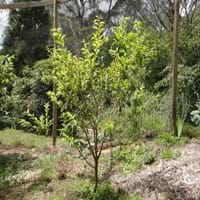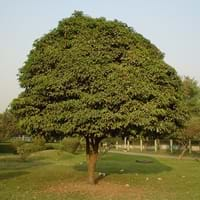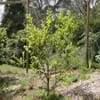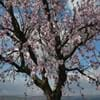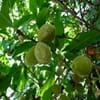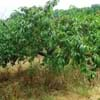Life Span
Biennial
Perennial
Origin
Hybrid origin
India, Melanesia
Types
Flavorosa, Amigo, Eagle Egg
Alphonso, Florigon, Jakarta
Habitat
Wet lands
Subtropical climates, Tropical regions
USDA Hardiness Zone
6-9
10-15
AHS Heat Zone
10-1
Not Available
Sunset Zone
2a, 2b, 3a, 3b, 4, 5, 6, 7, 8, 9, 10, 11, 12, 14, 15, 16, 17, 18, 19, 20
H1, H2, 23, 24
Habit
Upright/Erect
Oval or Rounded
Flower Color
Not Available
Yellow, Red
Flower Color Modifier
Bicolor
Bicolor
Fruit Color
Green, Orange Red, Red, Yellow green
Yellow, Red, Green, Orange, Pink, Rose, Bronze
Leaf Color in Spring
Several shades of Green
Red, Purple, Dark Green, Bronze
Leaf Color in Summer
Not Available
Red, Purple, Dark Green, Bronze
Leaf Color in Fall
Not Available
Red, Purple, Dark Green, Bronze
Leaf Color in Winter
Light Green
Light Green
Leaf Shape
Palmately Lobed
Ovate
Plant Season
Winter
Spring, Summer, Fall, Winter
Sunlight
Full Sun
Full Sun
Growth Rate
Medium
Medium
Type of Soil
Clay, Loam, Sand
Loam, Sand
The pH of Soil
Acidic, Neutral, Alkaline
Acidic, Neutral, Alkaline
Soil Drainage
Well drained
Well drained
Bloom Time
Spring
Early Spring, Spring, Late Spring, Early Summer, Summer, Winter, Late Winter
Tolerances
Drought
Drought
Where to Plant?
Ground
Ground
How to Plant?
Transplanting
Grafting, Seedlings, Stem Planting, Transplanting
Plant Maintenance
Medium
High
Watering Requirements
Average Water Needs, Medium, Requires watering in the growing season, Water daily during growing season, Water Deeply
Over-head watering
In Summer
Lots of watering
Lots of watering
In Spring
Moderate
Moderate
In Winter
Average Water
Average Water
Soil pH
Acidic, Neutral, Alkaline
Acidic, Neutral, Alkaline
Soil Type
Clay, Loam, Sand
Loam, Sand
Soil Drainage Capacity
Well drained
Well drained
Sun Exposure
Full Sun, Partial Sun
Full Sun
Pruning
Remove damaged leaves, Remove dead branches, Remove dead leaves
Remove damaged leaves, Remove dead branches, Remove dead leaves
Fertilizers
All-Purpose Liquid Fertilizer, Apply 10-10-10 amount
All-Purpose Liquid Fertilizer
Pests and Diseases
Red blotch
Red blotch
Plant Tolerance
Drought
Drought
Flowers
Showy
Insignificant
Flower Petal Number
Not Available
Single
Foliage Texture
Not Available
Medium
Foliage Sheen
Not Available
Glossy
Attracts
Bees, Butterflies
Birds
Allergy
Itchiness, Rash, Swelling
bullous cheilitis, contact allergic dermatitis, Urticaria
Aesthetic Uses
Not Used For Aesthetic Purpose
Showy Purposes
Beauty Benefits
Not Available
Acne, Improve hair condition, Makes teeth white, Moisturizing, Removes dandruff
Edible Uses
Insignificant
Yes
Environmental Uses
Air purification
Air purification, Food for birds, Shadow Tree
Medicinal Uses
Immunity
anti-cancer, Digestion problems, Eye Problems, High cholestrol, Immunity
Part of Plant Used
Fruits
Whole plant
Other Uses
Jam, Jelly, Used As Food, Used in salads
Grown for shade, Used As Food, Used as Ornamental plant
Used As Indoor Plant
No
No
Used As Outdoor Plant
Yes
Yes
Garden Design
Fruit / Fruit Tree
Edible, Feature Plant, Fruit / Fruit Tree, Shade Trees, Tropical
Botanical Name
PRUNUS 'Spring Satin'
MANGIFERA indica
Common Name
Plumcot, Spring Satin Plumcot
Mango
In Hindi
Plumcot
आम का पेड़
In German
Plumcot
Mango Baum
In French
plumcot
Manguier
In Spanish
plumcot
Árbol de mango
In Greek
Plumcot
Mango Tree
In Portuguese
plumcot
Mangueira
In Polish
Plumcot
Drzewo mango
In Latin
Plumcot
Mango ligno
Phylum
Vascular plant
Magnoliophyta
Class
Magnoliopsida
Magnoliopsida
Order
Ericales
Sapindales
Family
Rosaceae
Anacardiaceae
Clade
Angiosperms, Eudicots, Rosids
Not Available
Tribe
Not Available
Not Available
Subfamily
Not Available
Not Available
Number of Species
Not Available
Season and Care of Plumcot and Mango Tree
Season and care of Plumcot and Mango Tree is important to know. While considering everything about Plumcot and Mango Tree Care, growing season is an essential factor. Plumcot season is Winter and Mango Tree season is Winter. The type of soil for Plumcot is Clay, Loam, Sand and for Mango Tree is Loam, Sand while the PH of soil for Plumcot is Acidic, Neutral, Alkaline and for Mango Tree is Acidic, Neutral, Alkaline.
Plumcot and Mango Tree Physical Information
Plumcot and Mango Tree physical information is very important for comparison. Plumcot height is 460.00 cm and width 370.00 cm whereas Mango Tree height is 910.00 cm and width 460.00 cm. The color specification of Plumcot and Mango Tree are as follows:
Plumcot flower color: Not Available
Plumcot leaf color: Several shades of Green
Mango Tree flower color: Yellow and Red
- Mango Tree leaf color: Red, Purple, Dark Green and Bronze
Care of Plumcot and Mango Tree
Care of Plumcot and Mango Tree include pruning, fertilizers, watering etc. Plumcot pruning is done Remove damaged leaves, Remove dead branches and Remove dead leaves and Mango Tree pruning is done Remove damaged leaves, Remove dead branches and Remove dead leaves. In summer Plumcot needs Lots of watering and in winter, it needs Average Water. Whereas, in summer Mango Tree needs Lots of watering and in winter, it needs Average Water.
